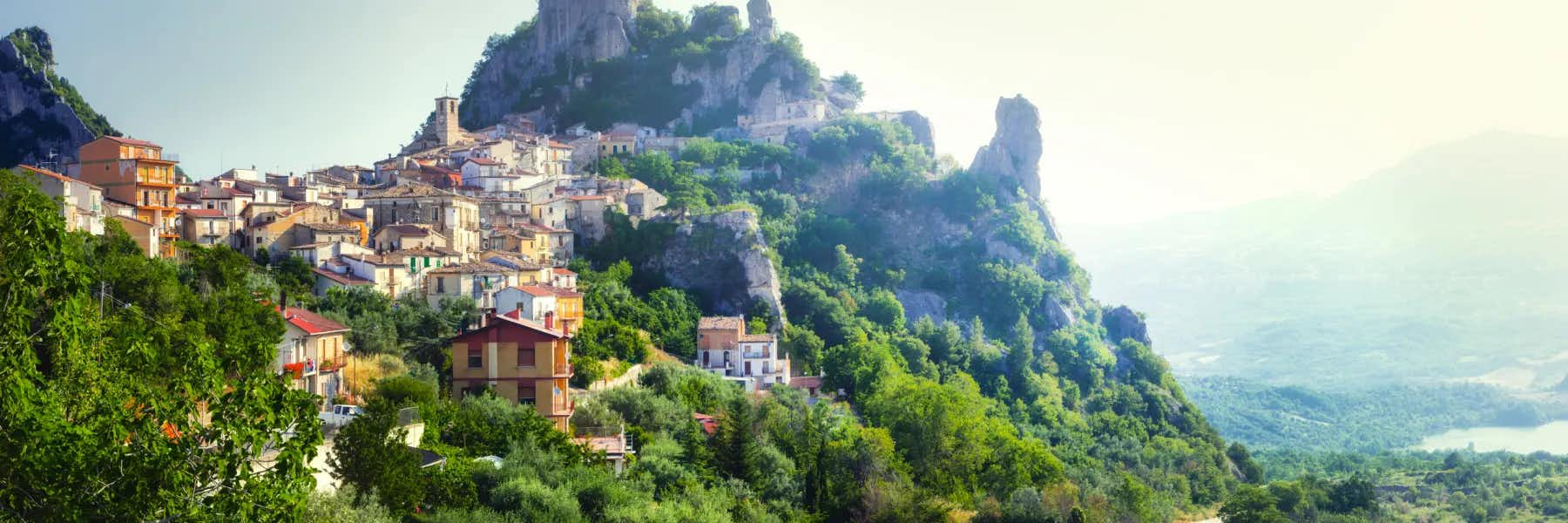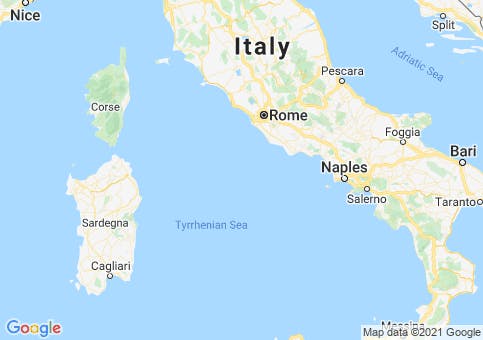The romantic boot of Italy is known for its varied geography, with something for everyone’s taste from plentiful seacoast, inland hills speckled with dreamy medieval towns, and alpine peaks. If you love it all and just can’t decide which one is for you, in Abruzzo you don’t have to. It encompasses all of this, and more.
Abruzzo is in the center of Italy, with its western border a mere 31 miles from Rome. Long considered part of southern Italy politically and culturally, it enjoys a central location that is bordered by the Adriatic Sea on the east, Le Marche on the north, Lazio on the west, and Molise to the south. It is an expansive territory of closely held traditions, vast natural splendor, picturesque towns, and miles of seashore.
Get Your Free Italy Report Today!
Get Your Free Italy Report Today!
Learn more about Italy and other countries in our daily postcard e-letter. Simply enter your email address below and we’ll send you a FREE report – Italy: Europe’s Most Seductive Country.

By submitting your email address, you will receive a free subscription to IL Postcards, Overseas Dream Home, The Untourist Daily and special offers from International Living and our affiliates. You can unsubscribe at any time, and we encourage you to read more about our Privacy Policy.
Retire in Abruzzo
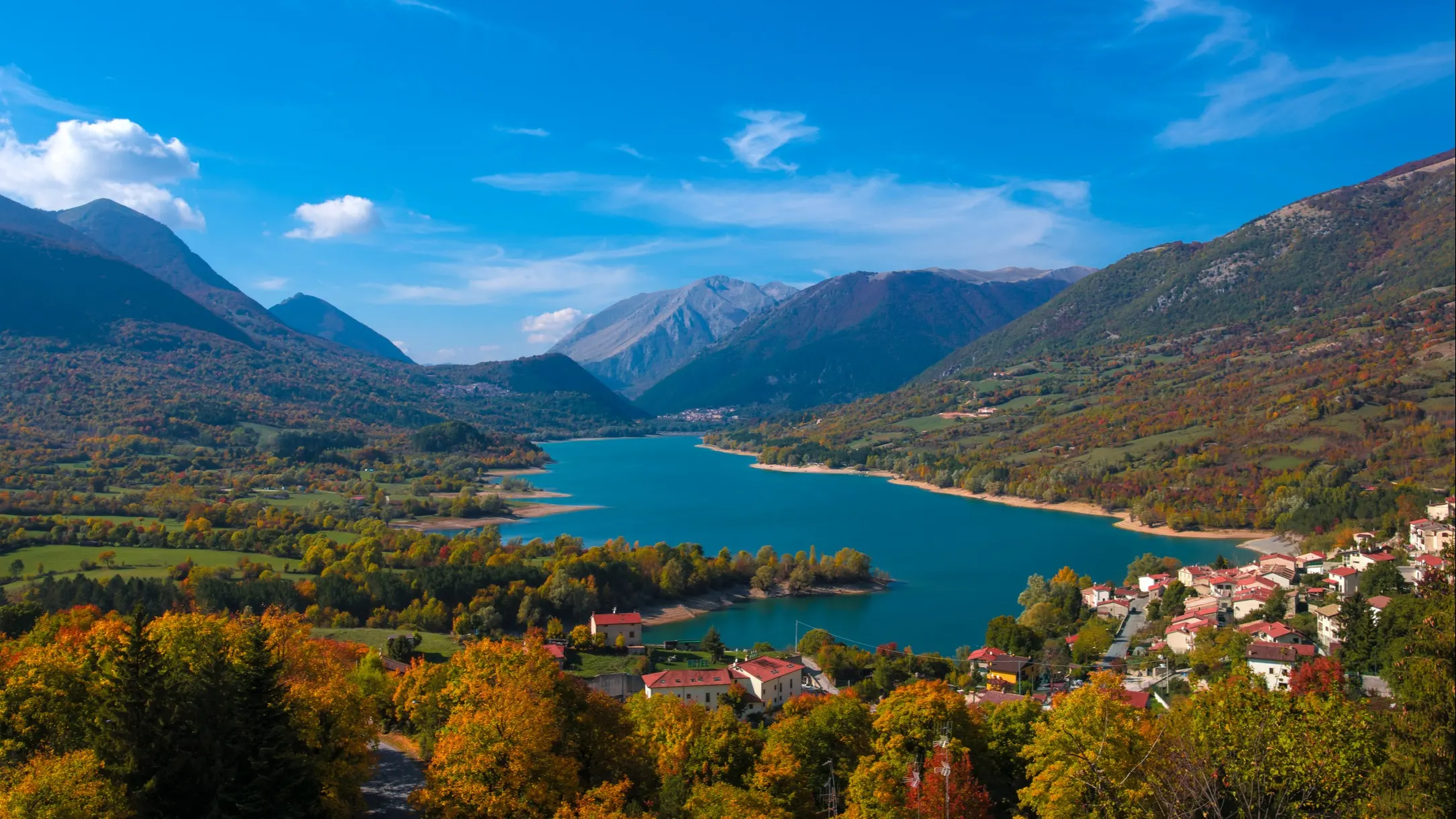
With castles, fortresses, historic art-adorned cities, perfectly charming stone towns on hilltops, and more than a third of the region protected as park land, there are plenty of things to enjoy in Abruzzo. A well-known wine country produces one of Italy’s famous vintages, Montepulciano d’Abruzzo, along with other stellar varietals, and you won’t have to look far to find wineries to visit. Vine-striped hills extend from the mountain foothills towards the Adriatic Sea, with classic central Italy landscapes like you see on postcards.
There are three national parks that offer an abundance of outdoors sports and activities, so you can indulge in hiking, skiing, mountain biking, climbing, or paragliding in the many mountain zones. If water sports are more your thing, Abruzzo boasts 80 miles of coastline, with sandy expanses and some lovely coves where the hills meet the sea. Golfers will delight in the region’s three clubs, while culture seekers will enjoy the art, theater, and events offered throughout the year. Abruzzo also has universities in Teramo, Chieti, Pescara, and L’Aquila which infuse the vibrant student presence and activities into the mix.
The primary appeal comes in the form of beautiful smaller cities and towns. Built on hills with monuments, palazzi, and cobbled streets, if you visited without knowing the region, you might think you were in Tuscany. Places like Penne with its tidy lanes, bustling weekly market, beautiful stone-built buildings, and upscale atmosphere exude the aura that you come to expect in a hill town in the more famous region of Italy. Sweet Sulmona with its Roman history and urban plan was the birthplace of the Roman poet Ovid and has a remarkably elegant and upscale look and feel to it. It is also the sweetest place in Abruzzo with its confetti candies; the fancy sugar-coated almonds. Lovely towns dot the hilltops that skirt the border with Le Marche, offering the same landscapes but with lower prices. Seaside towns like Ortona and Vasto give views and year-round life in easy reach of the water, while Pescara is a modern city with a commercial port, rail connections, and airport. What it lacks in charm it makes up for in verve and life, with clubs, action, and shopping.
Lifestyle in Abruzzo
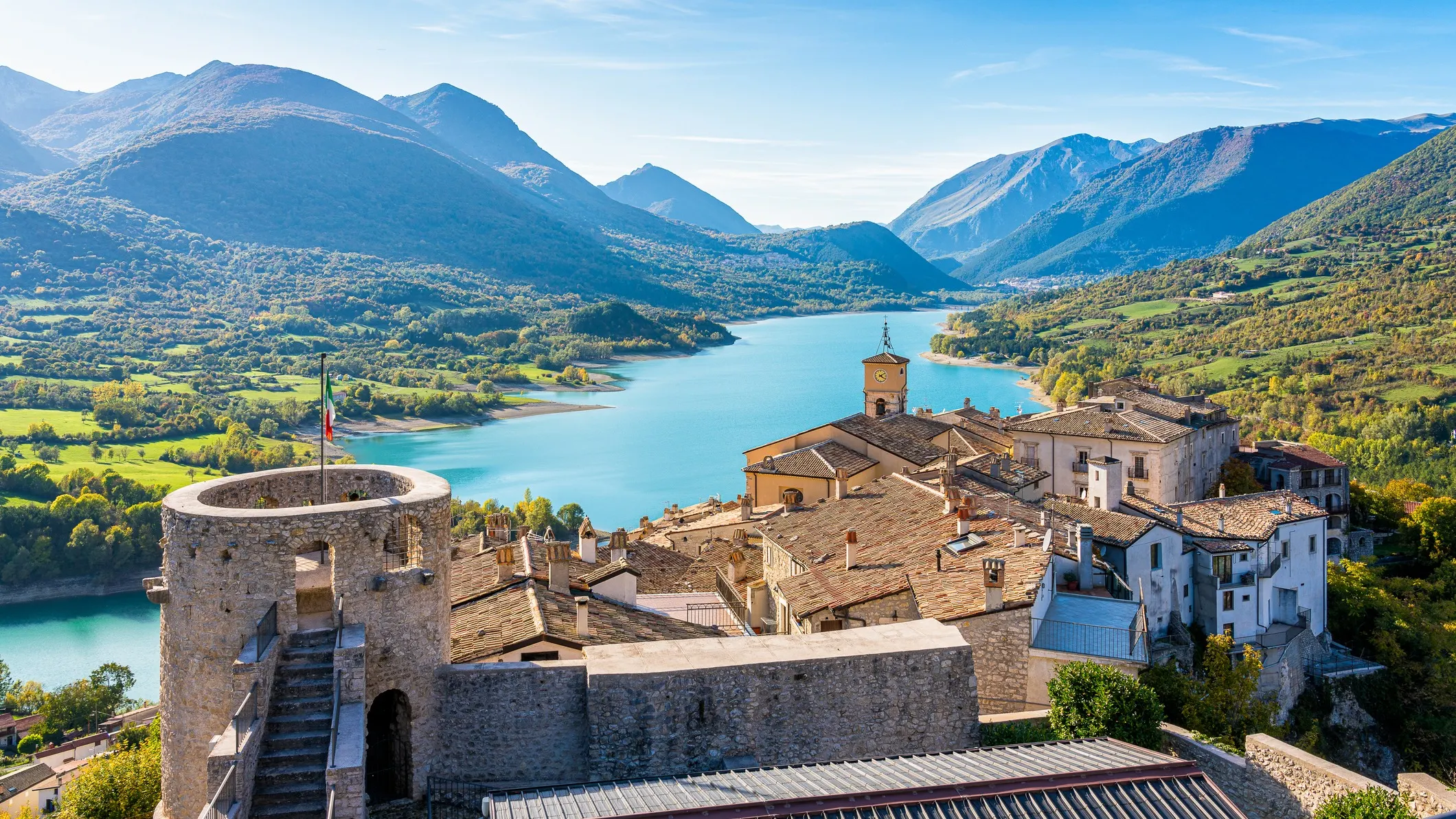
Whether you want a night at the theater or a simple bocce ball game (is a ball sport, similar to boules) you’ll find both here. An evening passeggiata (leisurely stroll) and a pre-dinner drink are cherished traditions, while centuries-old festivals, including medieval palio (horse racing) events, and religious processions are still carried on. There are also food festivals that let you enjoy the area’s specialties at low prices, along with dancing and socializing. From grape harvests, chestnuts, sausage, fresh fish, and the myriad pasta dishes, you’ll find a festival for it in Abruzzo.
While much of the region holds its rural roots close to heart, it doesn’t mean culture is overlooked. There are beautiful velvet-draped opera theaters in Sulmona, Teramo, and Chieti that offer full schedules of shows, concerts, and operas. There are also plenty of churches adorned with excellent artwork, and museums scattered in nearly every sizable town.
Outdoors enthusiasts will be in heaven in Abruzzo. The region is home to Italy’s largest national park—the Gran Sasso, along with two other sizable national parks and a couple of nature preserves. There is no lack of mountain biking, hiking, horse riding, climbing, skiing, and fishing. Those looking for nature’s curative remedies will delight in the mineral-rich hot springs, and accompanying spas found here. And, so much coastline, there are plenty of beaches and coves to satisfy everyone’s taste. This is where you find the distinctive trabocchi, old-time wooden fishing platforms. Some are still in use and make picturesque backdrops for your day of sun and surf.
Many Italians consider Abruzzo a culinary high point; the region preserves distinct recipes from times gone by, making them just as their great-grandparents did. The cucina povera (peasant cooking) gave birth to delicious, innovative, and healthy fare, and Abruzzo’s centers on both seafood and hill cuisine.
Cost of Living in Abruzzo
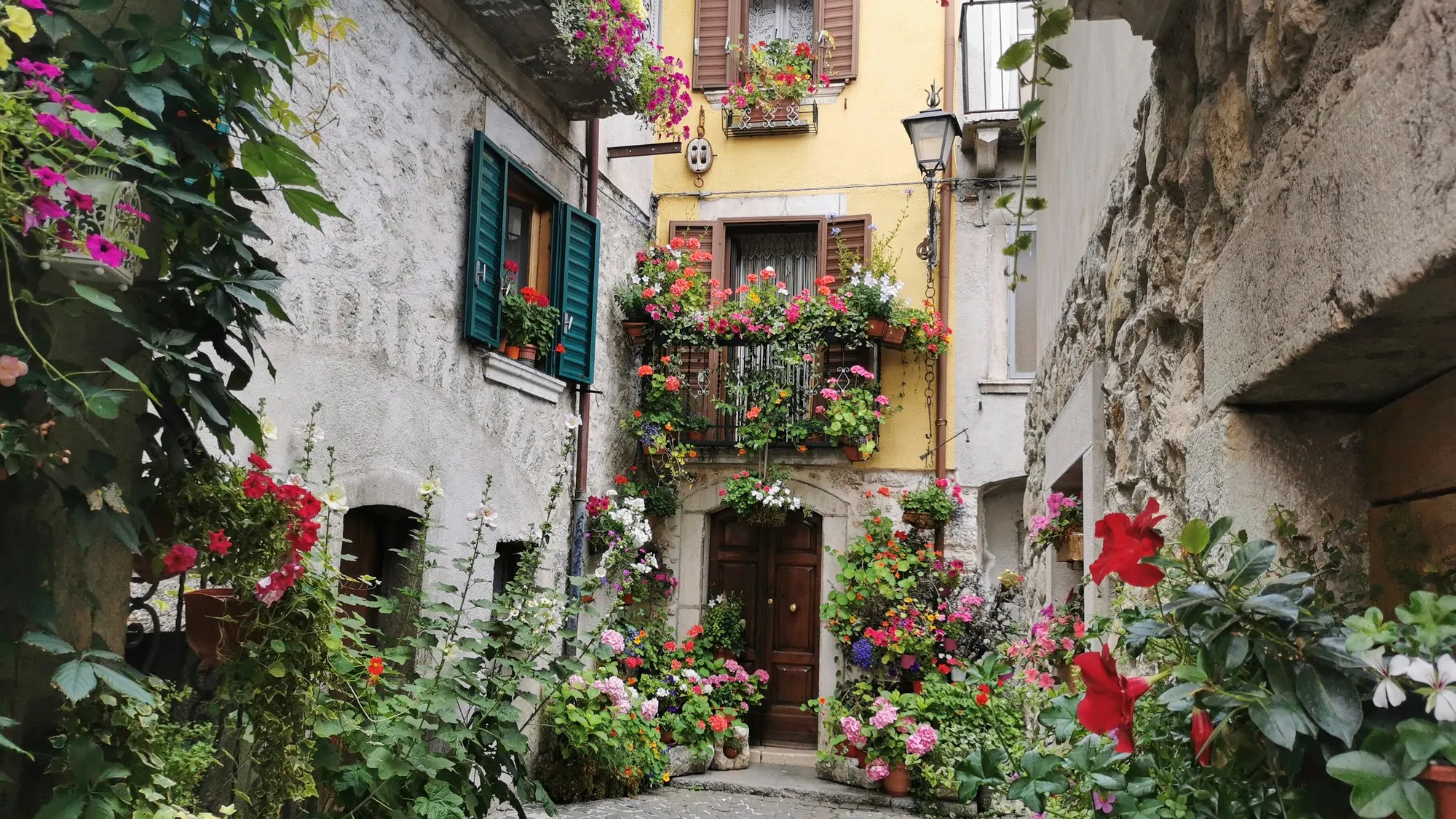
Abruzzo is a region for bargain hunters because it has managed to stay off the expat and trendy radar, despite its allures. You’ll find everything from rock-bottom priced village homes to country villas, at prices that will appeal to all budgets. Of course, the lowest prices are in small villages but even many of those have castles and monuments, everyday services and offer access to larger towns. A few examples:
A beautifully-restored brick country house in a ridgetop village just 30 minutes from the sea and 45 minutes from Pescara, with three bedrooms, two baths, and more than two acres of land that includes olive trees is priced at just $190,000, less than half what a similar property would go for in more famous regions.
A renovated spacious townhouse with four bedrooms and panoramic roof terrace in a picturesque town only a half-hour drive from the city of Pescara and its airport is listed at $132,900.
A three-story three-bedroom townhouse in a hill town overlooking the sea, with views on both the water and the mountains is listed for a mere $62,400.
Village homes in the hills are going for €25,000 to €40,000, making the region affordable to those on a tight budget, too.
Rental rates vary between $200 a month in a smaller town to a still-affordable $350 a month in upscale cities like Sulmona and Penne. The center of Chieti with its bustle and shopping is even affordable with rentals for less than €436 a month.
With the low cost of living, this is an ideal region for those who want the slower pace and beauty of Italian life while sticking to a budget. Housing prices are still low overall, and so are rentals. There are plenty of inexpensive festivals and annual events for affordable fun, and even the theater shows aren’t pricey. With the area’s rural farms, you’ll find excellent seasonal produce; and local fishermen bring in fresh catches regularly which you’ll find in markets around the region. The no-nonsense Abruzzese love their traditional trattorias that serve good food at equally good prices. Pizza and beer for two will cost you about $20; breakfast of cappuccino and cornetto, (the Italian croissant), is just $2.50. A day at the beach, with a colorful umbrella and lounge chairs runs about $14.
Get a haircut and style for $25, or even less in some towns. A manicure will run you about $12 and a pedicure just $22. A season ticket for a nine-show theater series in Pescara is listed at only $110, while a popular musical in Sulmona’s sophisticated historic theater costs $27. A bus ticket to Rome from Pescara, Teramo, or Chieti runs between $9 to $14 one way, while a train ride to Venice starts at $37. Excellent wine is found everywhere for just a few dollars a bottle, or you can take your jugs to the wineries and fill them up with table wine for a mere $2 a liter. And, if you’re in Ortona, you can enjoy free-flowing wine absolutely free at the wine fountain. What’s not to love about Abruzzo.
Below is a sample budget for a couple living in Abruzzo:
| Expenses | U.S. $ |
|---|---|
| Rent (one-bedroom apartment) | $400 |
| Utilities (electric, gas, water) | $250 |
| Cell phone (x2) | $50 |
| Groceries | $300 |
| Internet | $30 |
| Dining Out (two times a week) | $150 |
| Total | $1,180 |
The Takeaway
If big cities or bustling tourist towns aren’t for you, then look at Abruzzo with its small-scale cities and stone hill towns. It’s not just beautiful; it is also affordable and friendly.
Get Your Free Italy Report Today!
Get Your Free Italy Report Today!
Learn more about Italy and other countries in our daily postcard e-letter. Simply enter your email address below and we’ll send you a FREE report – Italy: Europe’s Most Seductive Country.

By submitting your email address, you will receive a free subscription to IL Postcards, Overseas Dream Home, The Untourist Daily and special offers from International Living and our affiliates. You can unsubscribe at any time, and we encourage you to read more about our Privacy Policy.
3 Reasons Why Abruzzo, Italy is a Must-See Destination
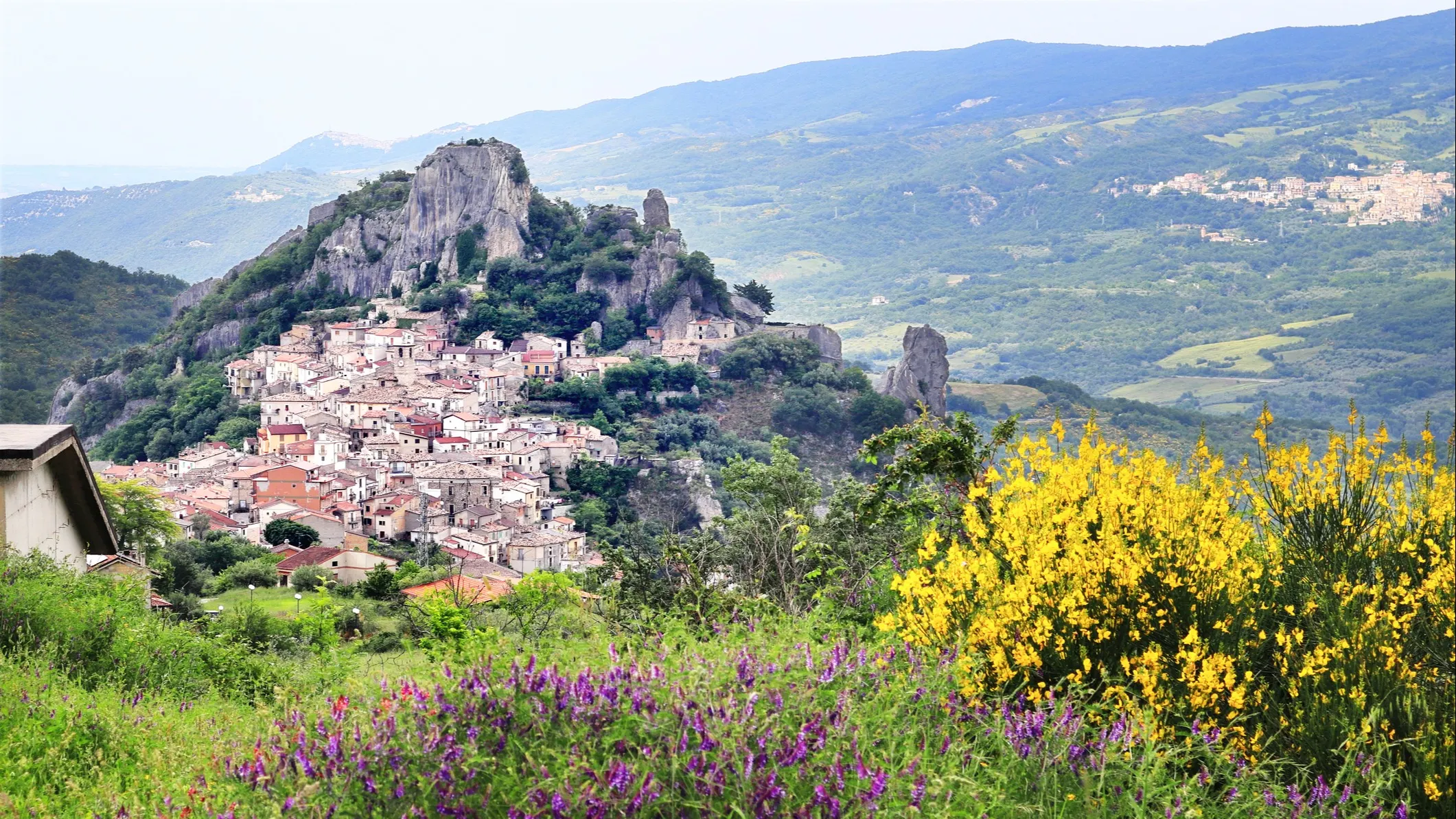
By Valarie Schneider
Located in central Italy, Abruzzo is a region that straddles the north and south of the country. It’s about two hours from Rome (closer than Tuscany or Le Marche).
Whether you want a lesser-known vacation destination or are looking for a new place to call home, Abruzzo is a good option. Here are three reasons why I think Abruzzo is worth your attention:
1. The Diverse Scenery
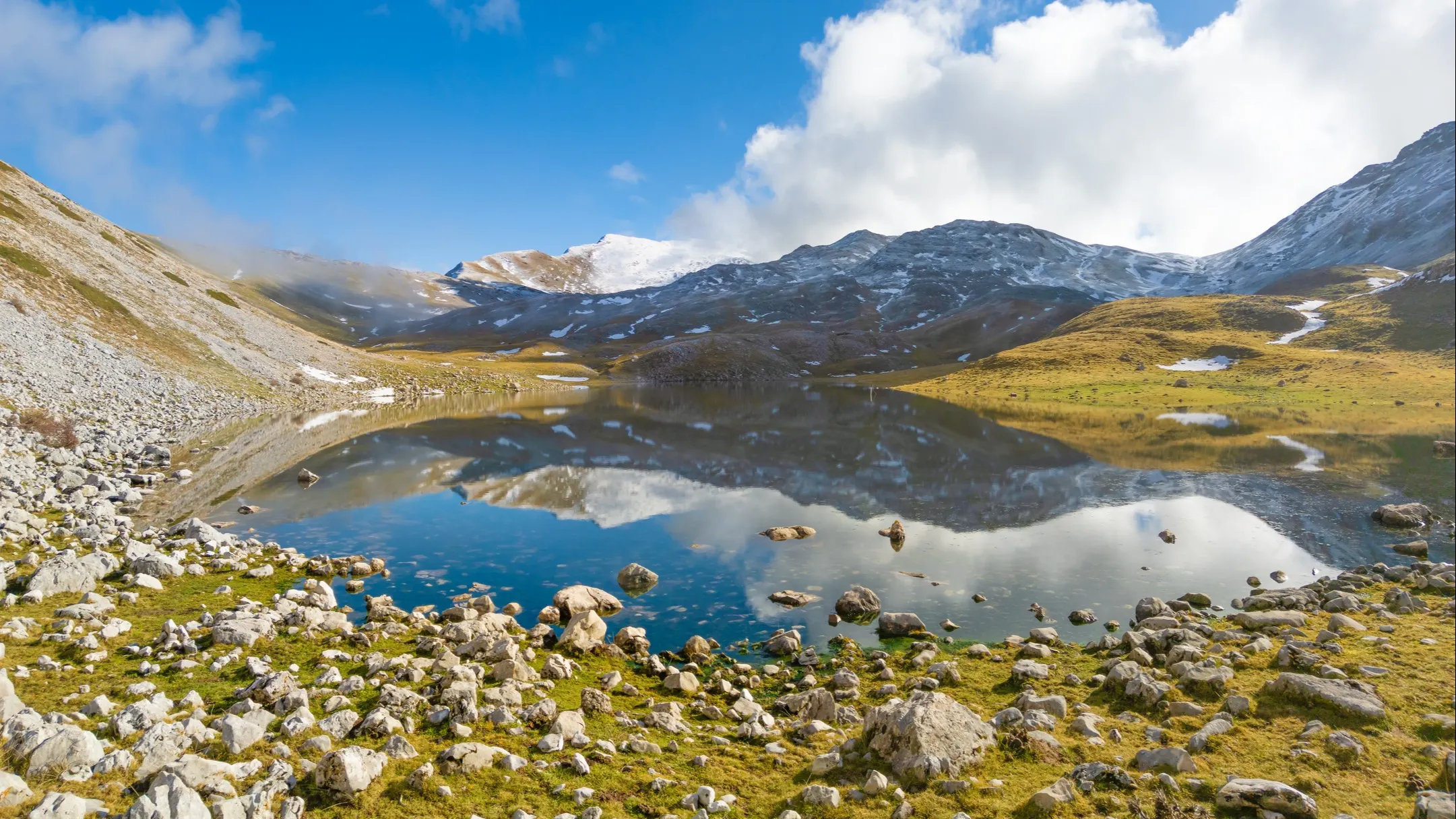
Abruzzo has the kind of scenery that stops you in your tracks. From soaring snow-dusted peaks, to vine-striped rolling hills, to a length of rollicking coastline along the Adriatic Sea, it is a microcosm of all of Italy’s greatest geographical features, tucked into one region.
The craggy Gran Sasso mountain is the giant centerpiece of the central Apennines and a breathtaking sentinel that seems both forbidding and beckoning. The national park in which it resides, Gran Sasso e Monti della Laga, is Italy’s second largest, where you’ll find jaw-dropping alpine panoramas that resemble the Alps.
Much of Abruzzo is made of rolling hills covered in vineyards, a continuation of Le Marche’s countryside, where the world famous wine, Montepulciano d’Abruzzo, is made. Stone hamlets clutch their hilltops, with storybook castles and tall towers that once defended their towns and dissuaded invaders--they now entice visitors with their romantic aura.
And then there is the coast—80 miles of it. There are extensive golden-sand beaches with easy access at both the north and south ends of the region, and a rocky shore in the middle, called the Costa dei Trabocchi. Here, the hills fall to the water, creating pebble-carpeted coves. They are never crowded and the water is translucent. The rustic trabocchi (old wooden fishing platforms), many of them still in use, are lovely backdrops for swimming.
2. The Relaxed Lifestyle
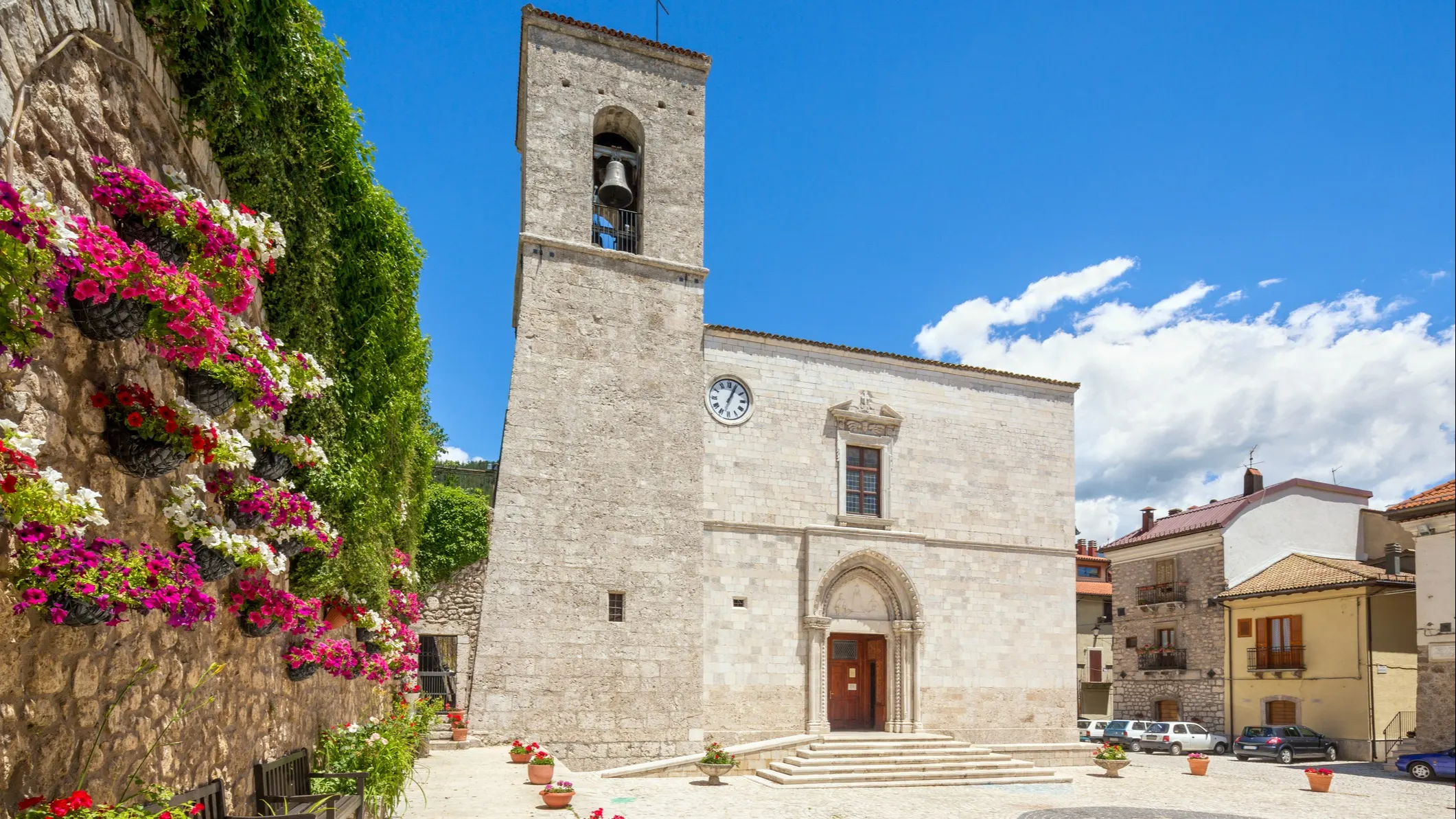
Part of Italy’s appeal is the laidback lifestyle it offers, and Abruzzo is no exception. The largest city is Pescara, with a population of about 325,000. Even there, life doesn’t feel frenetic. Smaller towns offer relaxed living but without forsaking conveniences; even villages have the necessary services for daily life, and the provincial cities are never far away. If you want to get away from it all, mountain hamlets offer seclusion surrounded by nature. But the most appealing places are those in the hills, between the mountains and the sea, so you can enjoy the best of both worlds.
It’s easy to be active here, with plenty of outdoor pursuits, like hiking, skiing, swimming, watersports, and cycling. Exploring the wealth of historical sites could keep you busy for years, while the food festivals and cultural events are colorful, joyful, and a chance to really embrace the local atmosphere.
Abruzzo clings to its traditions; its artisan tradespeople like goldsmiths, barrel makers, and coppersmiths are still active and interesting to watch. A sweeter craft is the colorful confetti—candy coated almonds made in Sulmona. No celebration in Italy—from baptisms, weddings, and graduations—takes place without them.
Abruzzo is also an unsung culinary region. Whether its seafood or farm-fresh dishes, the cooks take rustic recipes to new heights. They take simple local ingredients—pasture-grazed lamb, home-grown vegetables, fresh-caught fish, cheeses, mushrooms—and know how to bring out the best flavor of each mingled ingredient.
But let’s not forget the people. The Abruzzesi are a big part of what makes Abruzzo special. In our travels in the region, we’ve been offered coffee by strangers, given samples of homemade cheese, and, once when we were lost, were led down the mountain by a farmer who wanted to make sure we didn’t take a wrong turn. One friend who spent her childhood summers in Abruzzo swears, “The Abruzzesi are strong, steadfast, and generous to a fault.” They will go out of their way (sometimes literally) to help and welcome you.
3. The Unquestionable Affordability
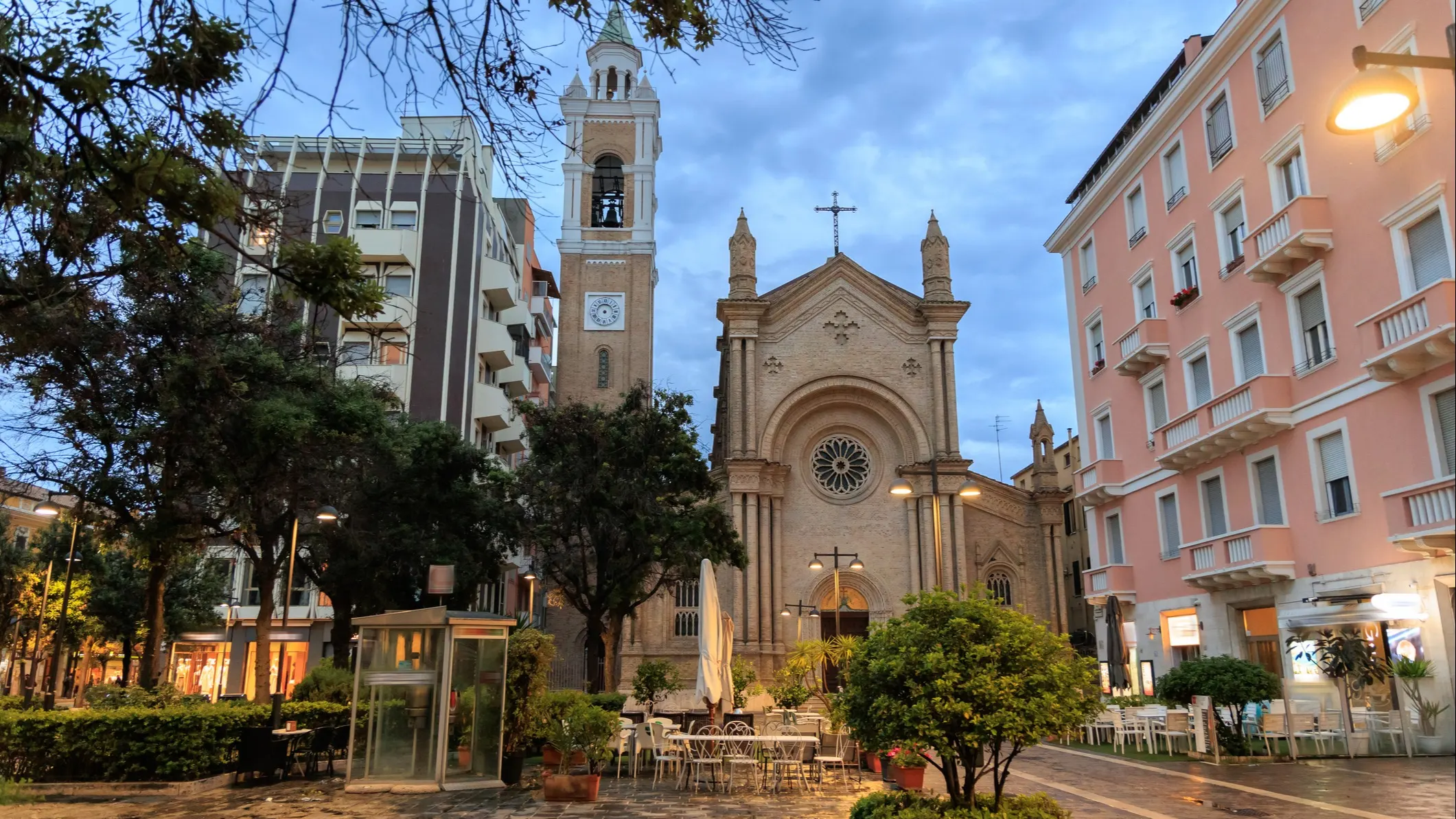
Abruzzo is a bargain. A full meal in a restaurant here will cost you the same as a mediocre tourist meal in Rome. Dinner in the beautiful town of Sulmona—five courses including wine—costs $25 per person. A seafood feast at a waterfront restaurant in San Vito Chietino will set you back $31 per person. You can start your day with a cappuccino and fresh-baked cornetto for just $2.40—about a buck less than your “latte” costs you in the U.S. And a glass of wine in the evening with snacks on a beautiful piazza? Don’t expect to pay more than $5.
Housing prices here are some of the best value in Italy, without sacrificing convenience. For example, a renovated townhouse in Sulmona with two bedrooms, exposed stone, and a rooftop terrace in the historic center where you can walk to everything, is €99,000 ($105,800). And it comes furnished.
If you dream of a farmhouse, there is one available with spectacular views of the Gran Sasso range. The three-bedroom house was given a high-quality restoration, sits on more than an acre of land with vines, fruit orchard, and olive trees, and all for just €165,000 ($176,300). That’s less than ruins costs in neighboring Le Marche. It is only 30 minutes to the beach, and to the airport at Pescara, and an hour from the ski slopes.
Or maybe the sea is more appealing to you. In that case, how about a two-bedroom apartment in the hill town of Tortoreto, at the border of Le Marche. The modern home is move-in ready and features two big balconies that afford sweeping views of the Adriatic, at the affordable price of €88,000 ($98,819), even more of a bargain when you consider the building has a community swimming pool, too.Things to Do In Abruzzo, Italy
By Valerie Fortney
Abruzzo is one of Italy’s overlooked gems –oddly hailed as “remote” despite sitting in the central part of the country. It’s true that the many mountains have impeded invaders (and now tourists) through the ages, but that just means the region retains it uninterrupted traditions and natural splendor.
Abruzzo enjoys dramatic scenery, a sensational seacoast, and curvy hills spiked with world-class wine grapes. Its towns are more rustic than regal, but still full of charm, and there are some truly stunning jewels among them. Moreover, its people offer real hospitality to those who visit.
If you’re ready to explore this unsung region, here are eight things to see and do.
Eat on the Water

Abruzzo has 80 miles of coastline all its own, with wide sandy beaches on the north and south ends, and a rocky, cove-studded section in the middle. While you’ll find excellent seafood all along Abruzzo’s Adriatic shore, the best and most fun is found in the middle part, called the Costa dei Trabocchi. Here you’re not just dining at the beach; you’re able to dine on the water. The trabocchi are old wooden fishing platforms that stand right in the sea, reached by a gangway; several have started offering restaurant services, where you can savor the fresh catch while sitting directly over the lapping water.
Get Out to the Great Outdoors

Look at a map of Abruzzo and you will quickly see just how much of the region is encompassed in national and regional parks—more than a third of it. Between the Gran Sasso Monti della Laga, the National Park of Abruzzo, Lazio and Molise, and the various regional parks and nature preserves, outdoors lovers will find their true Mecca in this mountainous region. Indulge in hiking, climbing, horseback riding, mountain biking, and skiing (both downhill and cross-country), or snow-shoeing. Want more adrenaline? Paragliding, skydiving, or zip lining. Then there’s the Adriatic Sea, where water enthusiasts will love the varied beaches, snorkeling, boating, jet-skiing, paddling, and fishing. One thing is for sure –if you get bored here, it’s not Abruzzo’s fault.
Soak in Some Hot Springs

All that hiking, skiing, or mountain biking will have left you sore, so soothe away the aches in the natural hot springs at Caramanico Terme. The medieval town has noted springs of curative waters that have been drawing wellness-seekers since the 1500s. There are several spa facilities to choose from, with pools, massage and mud treatments, vapor caves, and more. If spas aren’t your thing, there is a local brewpub with your name on it. Plus, the town itself is adorable; exuding old world charm, it’s named among the “borghi piu’ belli d’Italia” (the prettiest small towns in Italy).
Get Sweet in Sulmona
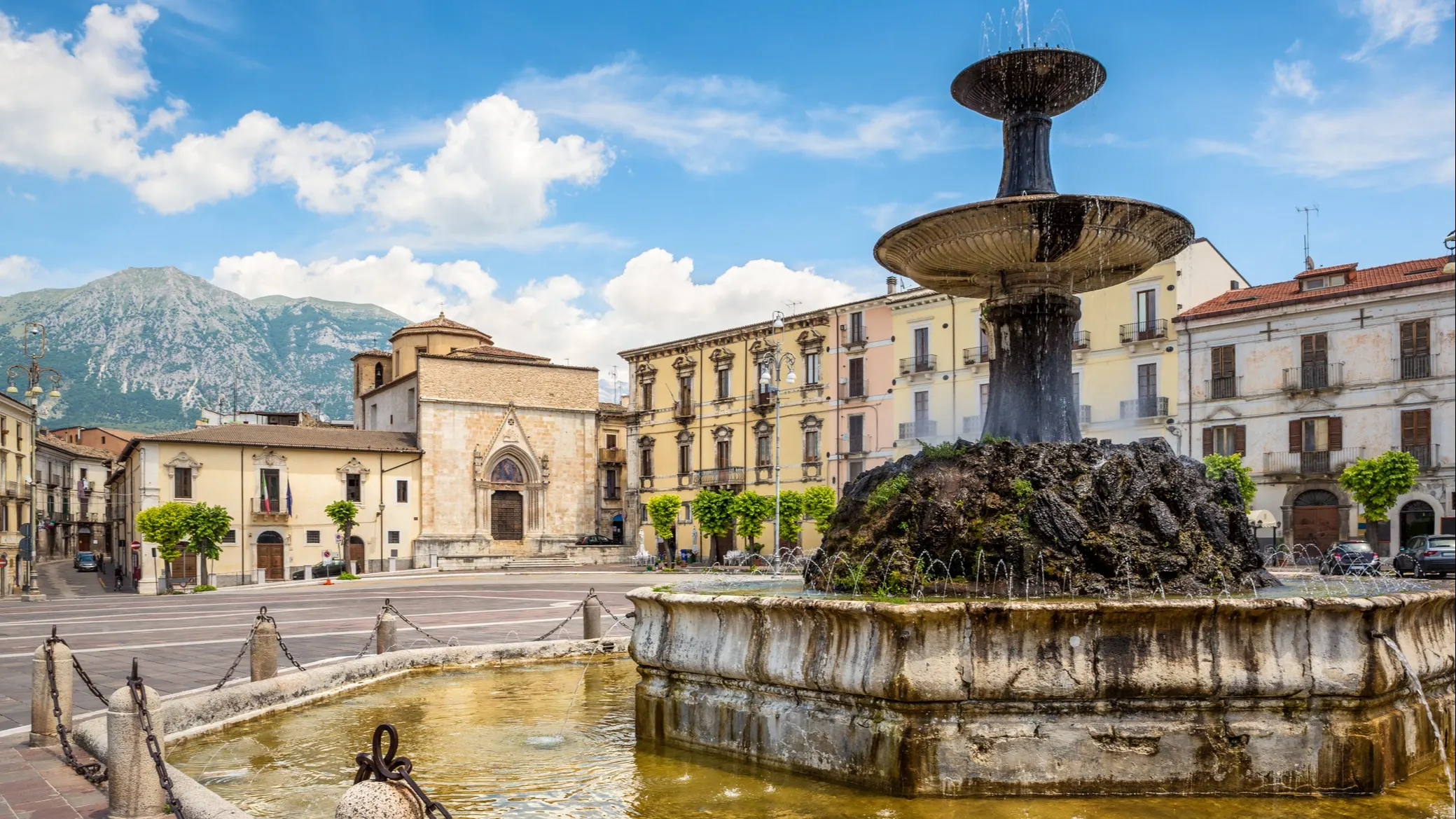
The refined beauty of Sulmona often gets eclipsed by its candy treats; the city is famous as the birthplace of confetti, the pastel, sugary almond confections whimsically arranged into bouquets. No wedding, baptism, or graduation in Italy is celebrated without them. The tradition dates backs to the 1500s, though the Pelino family was the first to introduce “factory production” of the sweets, and is still going strong.
But Sulmona offers much more than a quick glance in the candy shop windows. Surprisingly upscale, its long main drag boasts trendy shops, coffee bars aplenty, and an endless parade of stylishly-dressed residents. You’ll be enchanted by the city’s regal medieval and Renaissance palazzi, Roman ruins, medieval aqueduct, and its art-splashed churches and museums. It also puts on a thrilling palio event, similar to Siena’s, that turns the town back in time to the 1400s through a costumed parade and high-energy joust on horseback that pits the city’s districts against each other to win the coveted palio banner.
Drink from the Wine Fountain
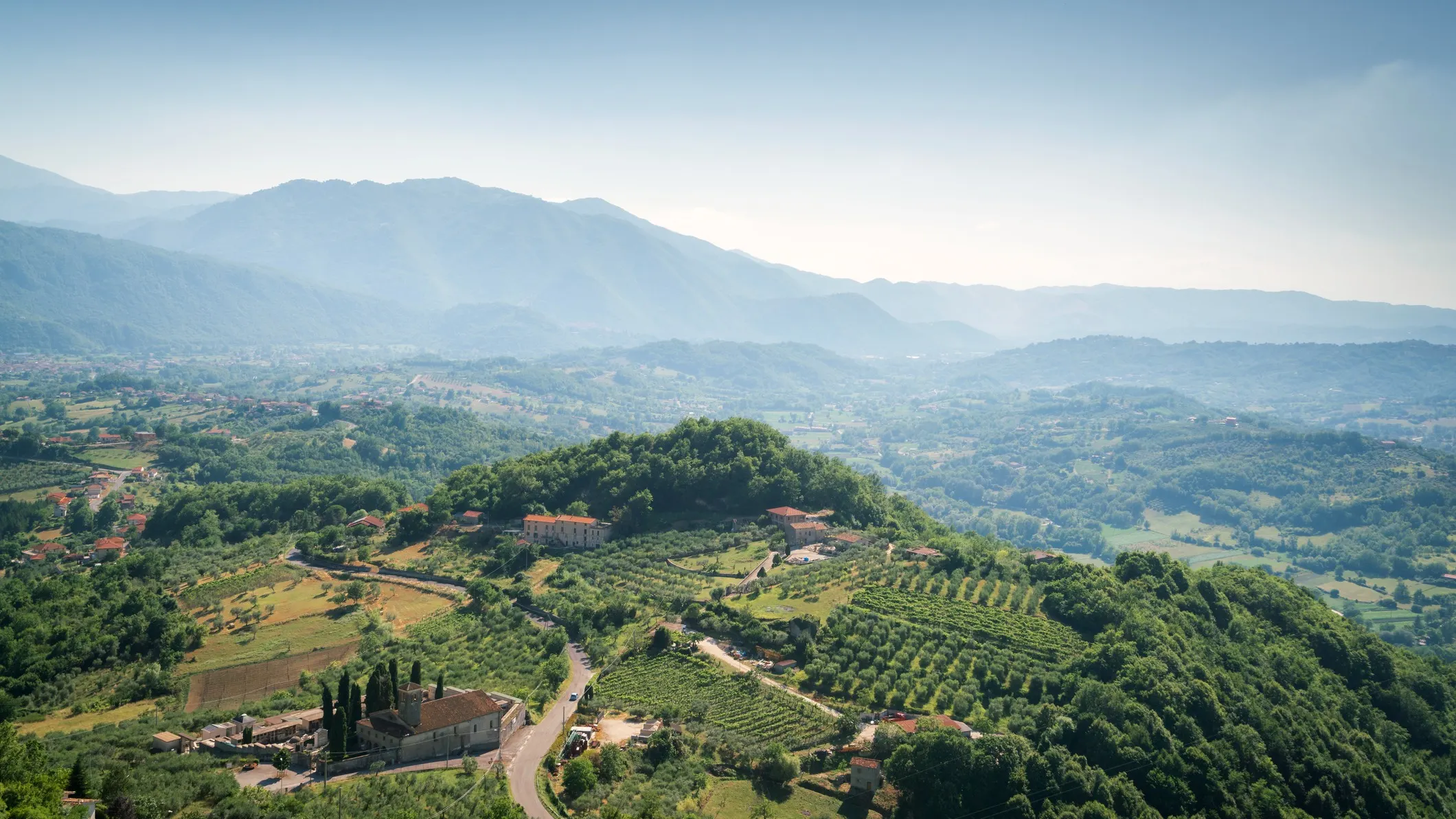
If you’ve ever wished for a fountain flowing with vino, your dream will come true here, where a fountain really does dispense wine. You’ll find it outside Ortona along the Cammino di San Tommaso (Way of St. Thomas), a path between Rome and Ortona that links the tombs of St. Peter and St. Thomas. The winery owners who installed it had the idea while hiking the Santiago Way in Spain; the font of free wine flows for pilgrims (and other passersby) along the path.
There are also plenty of wineries in Abruzzo proffering their excellent vintages, especially the famed Montepulciano d’Abruzzo, the region’s regal red. The full-bodied rose’ called Cerasuolo comes from the same grape. The whites are nothing to scoff at, either, so visit a winery (or several) to sample and buy (and be merry).
Tour “the Italian Alamo”
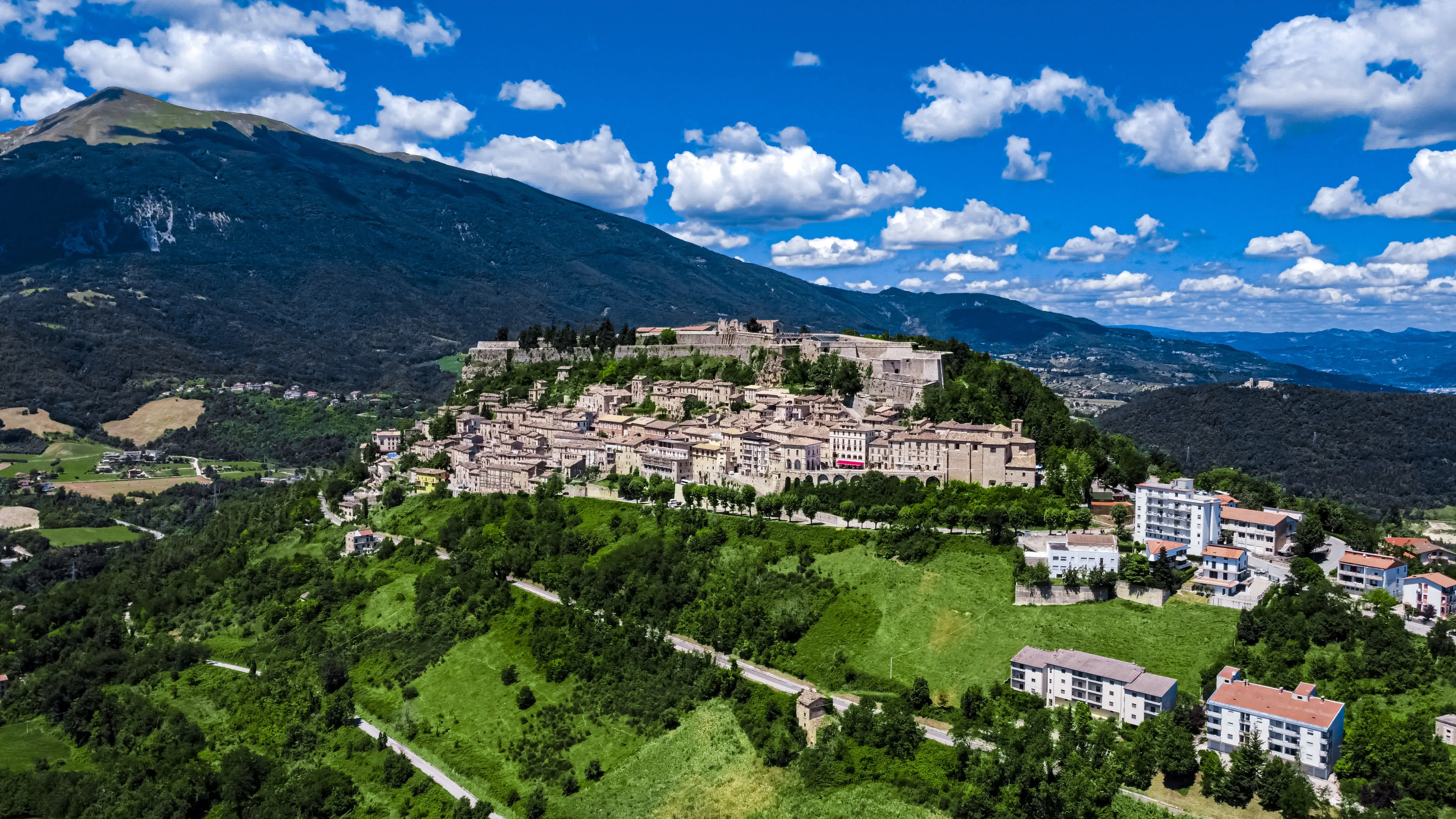
The fortress town of Civitella del Tronto near the border with Le Marche offers breathtaking views that sweep across both regions and draw the eye as far as the Adriatic Sea. Abruzzo was part of the Kingdom of Naples and little Civitella was especially strategic as it sat at the boundary of the Papal States. It resisted French troops and stood guard over the border for centuries but gained fame as the last holdout when Garibaldi and the Piemontese forces swept across southern Italy in 1860 and annexed the former Kingdom of Naples to the newly formed Kingdom of Italy. Civitella’s faithful fighters hung on in the enormous ridgetop fortress against all hope, resisting the invasion until finally surrendering on March 20, 1861, earning the name “Civitella la fedelissima” (most faithful). Walk the ramparts and rooms of the massive fortress. Bring a picnic for a perfect day trip.
Eat (Of course)
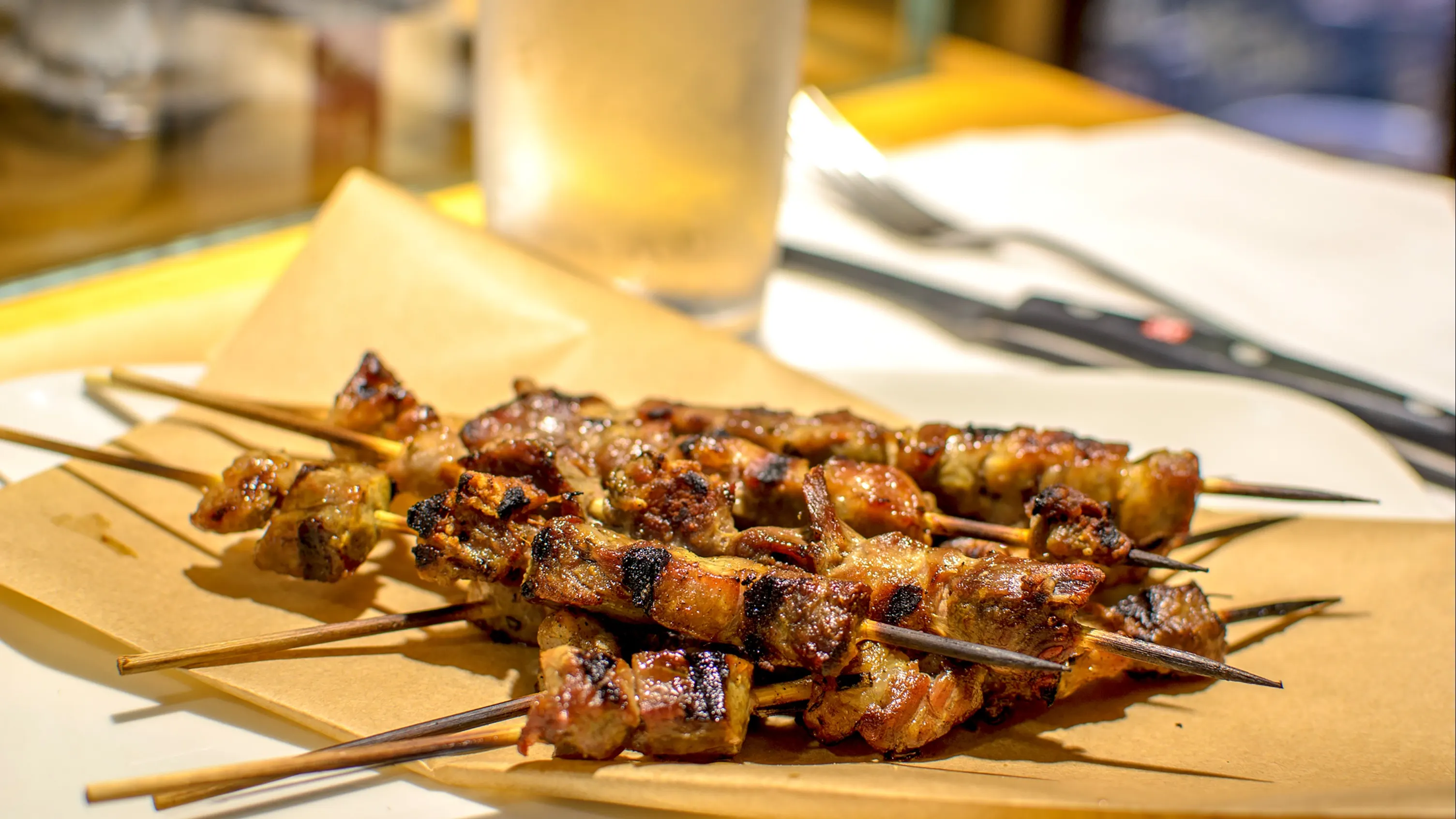
This is Italy, si mangia (you eat). And in Abruzzo, even more so. The region is known for its rustic but delicious fare with recipes from centuries’ old culinary traditions. This is where you’ll find the much-cherished “peasant food” at its best. Thick pasta strands called chitarra dressed with rich sauces; succulent skewers of lamb called arrosticini, grilled over a wood fire; homey stews; warming soups. Then there are the legume and vegetable dishes, locally made cheese and salami, the fabulous fish– there is much to savor here. Pick a homey trattoria or an agriturismo farm restaurant for a real honest-to-goodness Abruzzo food experience. Wash it down with the regional wines, and then boost the digestion with an after-dinner liqueur like the herbal genziana or cherry-spiked ratafia.
Indulge in the Joy of Discovery
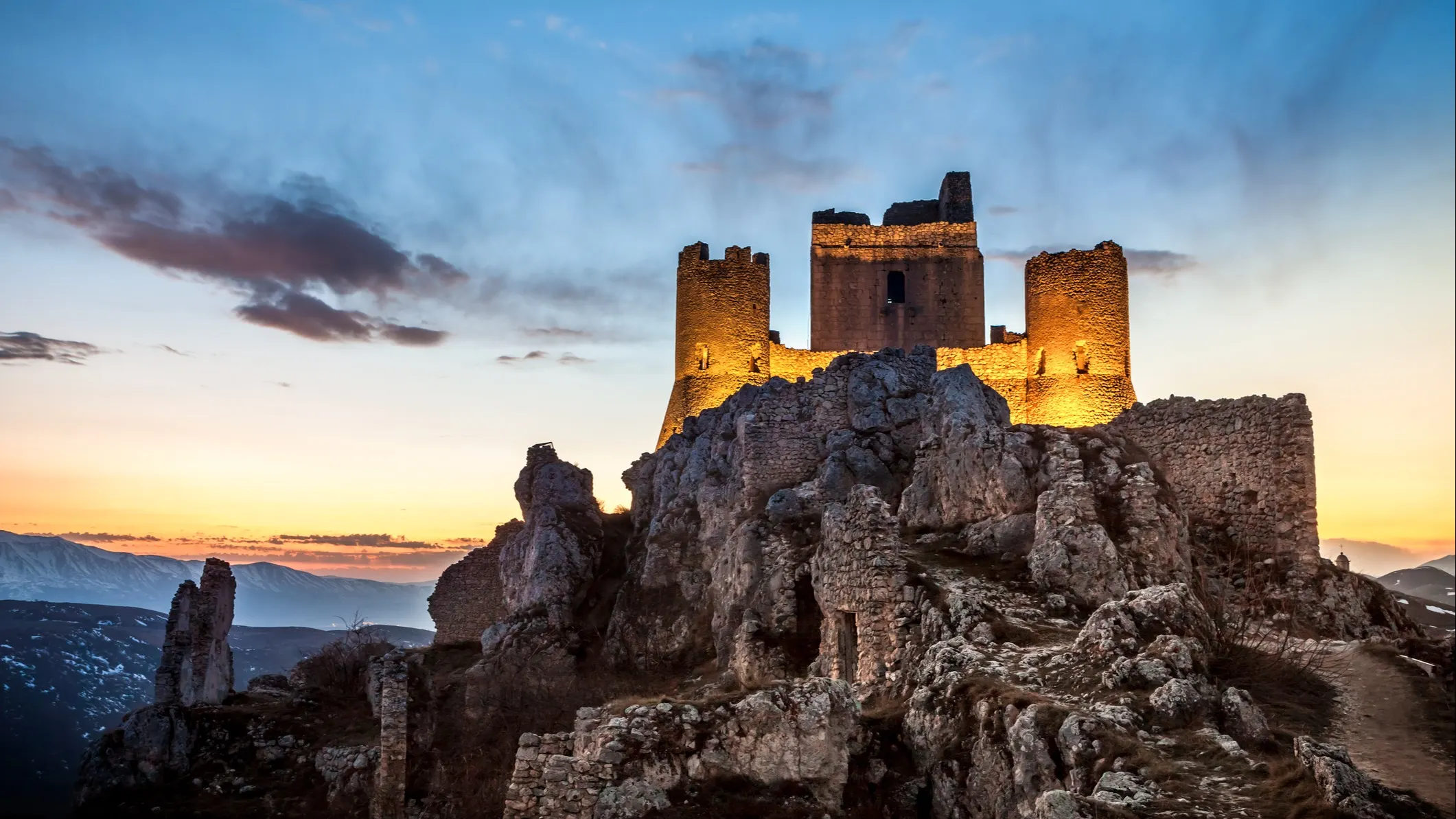
Because Abruzzo is off most travelers’ radars, you’ll get to feel the joy of discovering places that aren’t full of tourists. There are many gems that will surprise and delight you. Why not set your sights on towns like Scanno, known for its goldsmiths, set near a heart-shaped lake where the ancient dress and festivals are still alive. Or wander the cobbled streets of Penne, with dignified palaces and beautiful churches lined up within the ancient city gates. Ortona is a worthy choice, the alluring old town and Spanish fortress resting above the sea. Pretty Pacentro has the region’s oldest castle, along with tall towers and a striking setting surrounded by parks and mountains. Cozy Corropoli is a compact but cute town amidst stripes of vines and olive groves. There are dozens of unheralded places to explore. Wherever you choose, you’ll enjoy the pace, the hospitality, and the striking beauty of Abruzzo.
Featured Image Copyright: © iStock/Freeartist
Get Your Free Italy Report Today!
Get Your Free Italy Report Today!
Learn more about Italy and other countries in our daily postcard e-letter. Simply enter your email address below and we’ll send you a FREE report – Italy: Europe’s Most Seductive Country.

By submitting your email address, you will receive a free subscription to IL Postcards, Overseas Dream Home, The Untourist Daily and special offers from International Living and our affiliates. You can unsubscribe at any time, and we encourage you to read more about our Privacy Policy.
